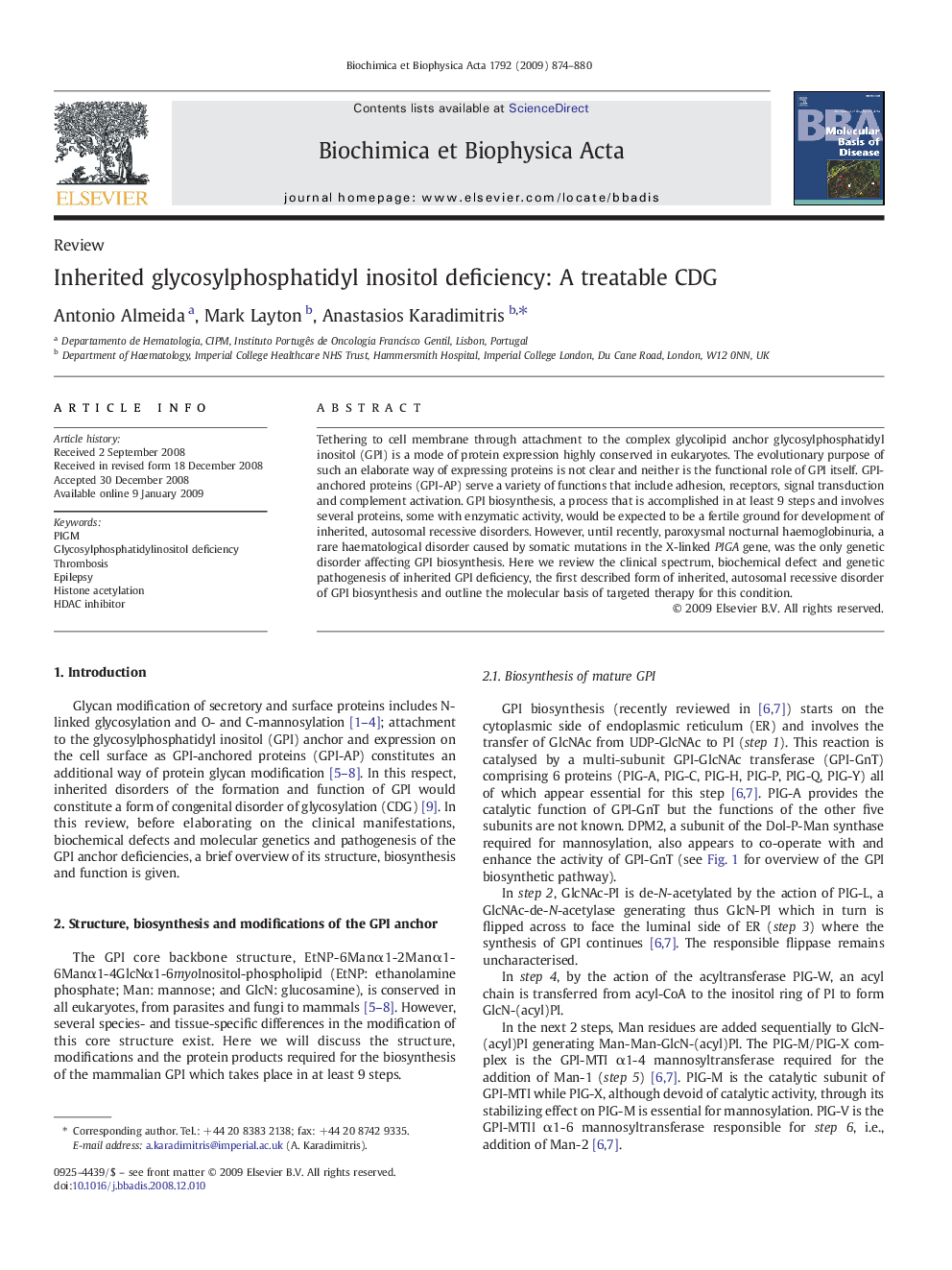| کد مقاله | کد نشریه | سال انتشار | مقاله انگلیسی | نسخه تمام متن |
|---|---|---|---|---|
| 1905548 | 1534715 | 2009 | 7 صفحه PDF | دانلود رایگان |

Tethering to cell membrane through attachment to the complex glycolipid anchor glycosylphosphatidyl inositol (GPI) is a mode of protein expression highly conserved in eukaryotes. The evolutionary purpose of such an elaborate way of expressing proteins is not clear and neither is the functional role of GPI itself. GPI-anchored proteins (GPI-AP) serve a variety of functions that include adhesion, receptors, signal transduction and complement activation. GPI biosynthesis, a process that is accomplished in at least 9 steps and involves several proteins, some with enzymatic activity, would be expected to be a fertile ground for development of inherited, autosomal recessive disorders. However, until recently, paroxysmal nocturnal haemoglobinuria, a rare haematological disorder caused by somatic mutations in the X-linked PIGA gene, was the only genetic disorder affecting GPI biosynthesis. Here we review the clinical spectrum, biochemical defect and genetic pathogenesis of inherited GPI deficiency, the first described form of inherited, autosomal recessive disorder of GPI biosynthesis and outline the molecular basis of targeted therapy for this condition.
Journal: Biochimica et Biophysica Acta (BBA) - Molecular Basis of Disease - Volume 1792, Issue 9, September 2009, Pages 874–880